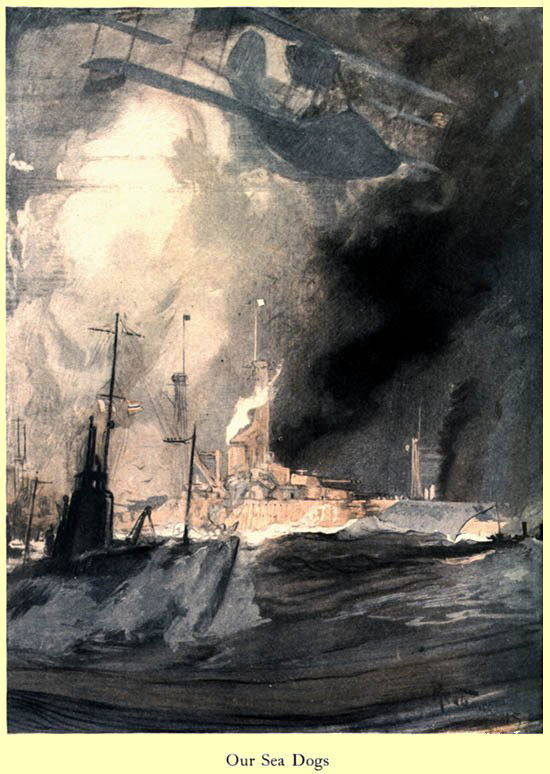Submarines in 1915
Today, we invent the submarine to create world peace. The University of Houston's College of Engineering presents this series about the machines that make our civilization run, and the people whose ingenuity created them.
The year is 1915. Europe has just gone to war. We Americans still believe that we're only bystanders. And submarine developer Simon Lake writes an article for the Century Magazine.
Lake is 49 years old and has now been building submarines for over eleven years. He'd been inspired by Jules Verne's 20,000 Leagues Under the Sea. Many people had built submarines before Lake. In fact, many built them before Verne wrote his book. But now Lake and his major competitor John Holland are busy developing the military submarine, as we know it, for America.
Lake's article has the curious title, The Art of Submarine Defense and Offense as Applied to International Peace. As we read, a great arsenal of existing submarines emerges. Photos show French, American, German, and British submarines. Lake includes one Russian submarine, which, he points out, was his design. At this time, he'd been having more success with his submarines in Europe than in the United States, although that was changing.
Yet the article begins, as it really must, with the Confederate submarine Hunley -- first submarine to sink a ship in war. The Hunley was powered by sailors turning cranks. Though it finally sank the Union ship Housatonic, it also sank, for unknown reasons, on three different occasions, killing all, or most of, the crew each time.
Lake points out that the two times it was recovered and refurbished, it was found with its nose in the mud, and the crew all in the nose. It clearly had no means for stabilizing itself underwater. Once unbalanced, one end would turn downward, and the crew would tumble into that end as it crash-dived.
He goes on to describe the way he and Holland created attitude stability in a submarine. He's polite in dealing with Holland, but firm in his claims to a better design.
And so we read about a dramatic buildup of submarines under Lake's title about his Art being Applied to International Peace. He finishes by praising the submarine as "the most potent influence that has been conceived to bring about a permanent peace between maritime nations." He emphasizes the point by quoting Holland, who noted howinvulnerable submarines are.
Well, that was in March of 1915. One month later, Walter Schweiger, captain of a new German diesel-powered U-20 submarine, caught up with the British passenger liner Lusitania. He fired a single torpedo, and only realized what he'd done as the name on the bow came into view. Twelve hundred civilians died, including 125 Americans. Germany had doomed herself by giving America an event that ultimately helped to nudge her into joining the War.
For all his talk of world peace, when Lake formed a new company in 1919, he named it Housatonic. That was the name of the first ship sunk by a submarine, so long before, and, in a fine historic irony Lake's company was located on the Housatanoc River after which that ship had been named. In any case it was, by then, clear war would survive the submarine after all, and this is what it was all about.
I'm John Lienhard, at the University of Houston, where we're interested in the way inventive minds work.
S. Lake, The Art of Submarine Defense and Offense as Applied to International Peace. The Century Magazine, Vol. LXVII, March, 1915, pp. 724-732.
Be sure to click on the links in the page above to see the submarine arsenal that Lake shows us.
For more on the Hunley, see: https://www.hunley.org/
The idea that submarines would end war was not original. Fulton made the same claim, over a century earlier. See Episode 304.

The Frontispiece of the March, 1915, Century Magazine suggests that the editors were less sanguine about the future of modern naval warfare than Simon Lake was. They accurately predict that it will be a combination of air, surface, and subsurface action.